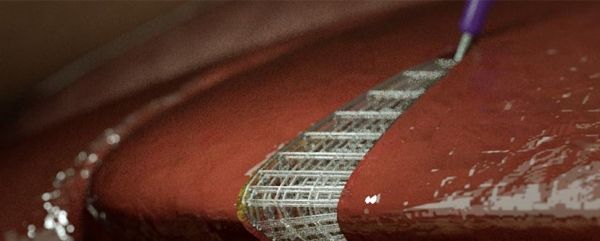In the TV series Westworld, human body parts are built on robotic frames using 3D printers.
In the TV series Westworld, human body parts are built on robotic frames using 3D printers. While still far from this scenario, 3D printers are being increasingly used in medicine. For example, 3D printing can be used to produce parts of the body such as orthopedic joints and prosthetics, as well as portions of bone, skin and blood vessels. However, the majority of these tissues are created in an apparatus outside of the body and surgically implanted. Such a procedure may involve making large surgical incisions, posing the added risk of infection and increased recovery time for the patient. And since there is a time lapse between when the tissue is created and when it is implanted in the patient, further complications may occur. To prevent these complications, a team of scientists have developed a technology to print tissues directly in the body.
There are two basic components needed to produce an engineered tissue: (1) a fluid-like “bio-ink” that consists of a framework material mixed with living cells, and (2) growth factors to help the cells grow and develop into regenerated tissue. When developing tissues for direct implantation into the body, there are other things to consider: the construction of tissue would have to be conducted at body temperature (37°C), the tissue needs to be attached effectively to soft, live organ tissue and any procedural steps should not be harmful to the patient. One such harmful step in current methods is the application of harmful UV light necessary to solidify the constructed tissue.
A collaboration among Ali Khademhosseini, Ph.D., Director and CEO of the Terasaki Institute, David J Hoelzle, Ph.D., from the Ohio State University Department of Mechanical and Aerospace Engineering and Amir Sheikhi, Ph.D. from the Pennsylvania State University Department of Chemical Engineering, has produced a specially-formulated bio-ink designed for printing directly in the body.
Read more at Terasaki Institute For Biomedical Innovation
Image: Image of a 3D lattice structure of a tissue implanted directly onto a soft living tissue. CREDIT: Ohio State University




